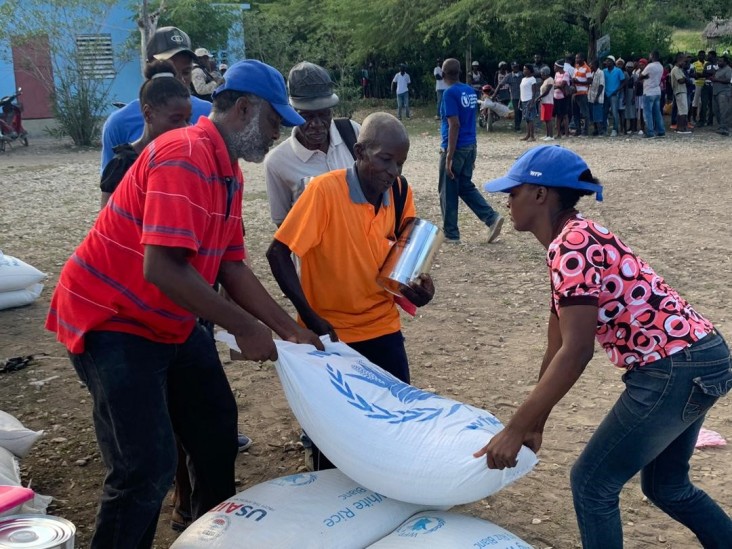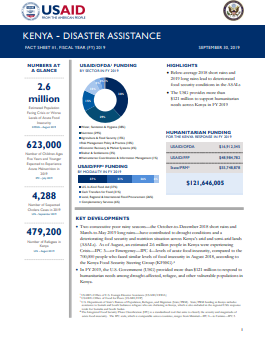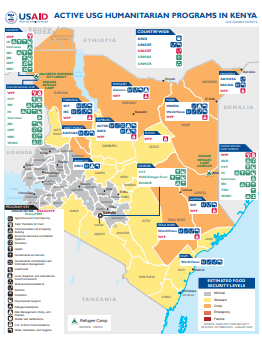- What We Do
- Agriculture and Food Security
- Democracy, Human Rights and Governance
- Economic Growth and Trade
- Education
- Environment and Global Climate Change
- Gender Equality and Women's Empowerment
- Global Health
- Humanitarian Assistance
- Transformation at USAID
- Water and Sanitation
- Working in Crises and Conflict
- U.S. Global Development Lab
Speeches Shim

Latest Kenya Fact Sheet
Kenya Disaster Assistance Fact Sheet #1 - 09-30-2019 ![]() (pdf - 249k)
(pdf - 249k)
view text version [pdf, 249kb]
Kenya Map - 09-30-2019 ![]() (pdf - 620k)
(pdf - 620k)
2020_09_30 East Africa Desert Locust Crisis Map ![]() (pdf - 1 MB)
(pdf - 1 MB)
Key Developments
Two consecutive poor rainy seasons—the October-to-December 2018 short rains and March-to-May 2019 long rains—have contributed to drought conditions and a deteriorating food security and nutrition situation across Kenya’s arid and semi-arid lands. As of August, an estimated 2.6 million people in Kenya were experiencing Crisis—IPC 3—or Emergency—IPC 4—levels of acute food insecurity, compared to the 700,000 people who faced similar levels of food insecurity in August 2018, according to the Kenya Food Security Steering Group.
In FY 2019, the U.S. Government provided more than $121 million to respond to humanitarian needs among drought-affected, refugee, and other vulnerable populations in Kenya.
USAID is also responding to the worst locust outbreak in decades. Learn more about our response in Kenya and several other East Africa countries.
Background
In Kenya, drought conditions have exacerbated chronic stressors, including food insecurity and malnutrition. Through ongoing programs, USAID is supporting efforts to strengthen health and nutrition systems in drought-affected areas in coordination with resilience initiatives to mitigate the effects of recurrent natural hazards. In addition, vulnerable populations across Kenya continue to confront several other challenges—including seasonal flooding, localized intercommunal conflict, disease outbreaks, and limited access to health and water, sanitation, and hygiene services—that contribute to sustained humanitarian needs in Kenya.



Comment
Make a general inquiry or suggest an improvement.